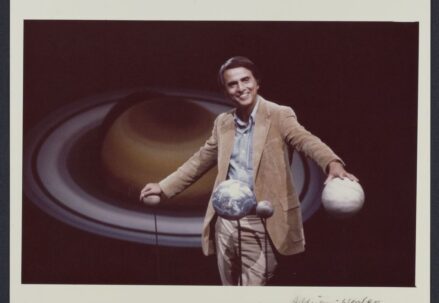In the realm of science, particularly in the study of astronomy, the narrative of Ole Roemer stands as a cornerstone. Hailing from Denmark, his groundbreaking discovery of the finite nature of velocity, and its initial measurement, marks a pivotal moment in the annals of science history.
Ole Roemer: The Innovator Beyond Astronomy
Born in 1644, Ole Roemer’s lifespan, concluding in 1710, was a period marked by profound contributions that transcended the realm of astronomy. His ingenuity was not confined to celestial observations; he was also a remarkable inventor. Among his notable inventions was the modern thermometer, a groundbreaking device capable of accurately gauging temperature between two critical points: the boiling and freezing points of water. This innovation played a crucial role in the fields of science and medicine, providing a reliable tool for precise temperature measurements.
Roemer’s educational journey at the University of Copenhagen was a significant phase of his life. Here, he delved deep into the world of astronomy, guided by his mentor Bartholin. Bartholin was not just an educator but a custodian of Tycho Brahe’s astronomical legacy, responsible for preparing Brahe’s works for publication. This exposure to Brahe’s works under Bartholin’s tutelage was instrumental in shaping Roemer’s scientific perspectives. It provided him with a solid foundation in astronomical principles and methodologies, setting the stage for his future discoveries. This period of learning and exploration at the university was a time when Roemer’s intellectual curiosity was nurtured, ultimately leading him to make seminal contributions to the field of astronomy and beyond.
The French Connection: Roemer and Cassini
Giovanni Cassini’s role as a pioneer in the application of the Galilean moons for determining longitude positions was pivotal in the advancement of astronomy. His appointment as the director of France’s Royal Observatory, following its opening in 1671, marked a significant era in astronomical research. Cassini’s foresight and vision were evident in his strategic decision to send Jean Picard to Tycho Brahe’s famed observatory at Uraniborg. This move was not just a mere transfer of personnel but a strategic alignment of minds that would shape the future of astronomical studies.
Jean Picard, a distinguished French astronomer and priest, known for his meticulous observations and contributions to the field, brought a wealth of knowledge and expertise to Uraniborg. His encounter with Ole Roemer there was not by chance but a confluence of astronomical destinies. Roemer, initially serving as Picard’s assistant, soon proved to be an invaluable asset. His remarkable skills in observation and analysis caught Picard’s attention, who recognized Roemer’s potential to contribute significantly to the scientific community. This recognition by Picard was instrumental in facilitating Roemer’s move to the prestigious Royal Observatory in France.
This transition for Roemer was more than a career advancement; it was an entry into a world where his talents could be fully realized and his contributions could be more impactful. Working at the Royal Observatory under the guidance of luminaries like Cassini and Picard, Roemer found the perfect platform to develop his theories and conduct groundbreaking research. This environment not only nurtured his intellectual curiosity but also positioned him at the forefront of astronomical discovery. The collaboration and mentorship he received were crucial in shaping his path towards making one of the most significant discoveries in the field of astronomy.
Deciphering Io’s Eclipses: A Puzzle Unveiled
While analyzing data from Uraniborg, particularly observations of Jupiter’s moon Io, Roemer encountered an anomaly. The time intervals between successive Io eclipses fluctuated, shortening as Earth approached Jupiter and lengthening when receding. The most significant revelation was during astronomical opposition and conjunction configurations. During opposition, Io’s eclipses occurred almost nine minutes earlier than expected, and during conjunction, about nine minutes later.
Challenging Established Norms: Roemer’s Insight
This discrepancy clashed with the then-prevailing belief of light’s infinite velocity, a theory staunchly defended by philosopher Descartes. Descartes argued that a finite light speed would result in noticeable misalignments during lunar eclipses, which were not observed. Roemer, however, daringly proposed that light’s velocity was finite. This hypothesis explained the variances in eclipse timings, as light traveled longer distances when Earth was farther from Jupiter.
The Debate and Beyond: Reception of Roemer’s Theory
Although Roemer’s conclusions stirred considerable debate, with figures like Cassini and Picard remaining skeptical, they found favor in England, notably with scientists like Newton and Edmund Halley. The controversy surrounding the velocity of light extended to who calculated its value first, with some attributing it to Christiaan Huygens, an early supporter of Roemer’s idea. Huygens’ calculations, based on basic geometry and arithmetic, estimated light’s speed impressively.
Roemer’s Enduring Influence
Today’s narrative, though brief, encapsulates a seminal moment in scientific history. Roemer’s intuitive and bold approach not only reshaped our understanding of the universe but continues to inspire, over three centuries later. His legacy is a testament to the enduring impact of curiosity and the courage to challenge established norms.
Conclusion: Roemer’s Lasting Impact on Modern Science
Ole Roemer’s journey, from a dedicated assistant at the Uraniborg observatory to a pioneering figure in astronomy, epitomizes the spirit of scientific inquiry and innovation. His discerning observation of Io’s eclipses and the subsequent bold hypothesis about the finite speed of light mark a watershed moment in the history of science. This leap in understanding transcended the boundaries of astronomy, influencing physics and the broader scientific community.
Roemer’s legacy is multifaceted. It not only lies in his direct contributions, such as the development of the modern thermometer and the measurement of light’s speed, but also in the intangible ethos he imparted to the scientific world. He taught us the value of questioning accepted norms, the importance of empirical observation, and the courage to propose theories that may initially seem unconventional. His work paved the way for future generations of scientists, including luminaries like Isaac Newton and Edmund Halley, to explore and understand the universe in new and profound ways.
More than three centuries later, Roemer’s impact remains deeply ingrained in the fabric of scientific thought. His story is a testament to the idea that true progress often requires challenging the status quo. It reminds us that the pursuit of knowledge is a journey of perseverance, insight, and sometimes, the willingness to embrace the unexpected. Roemer’s legacy endures, inspiring future scientists to look beyond the apparent and delve deeper into the mysteries of the cosmos.





